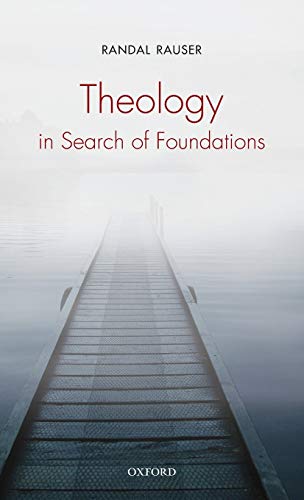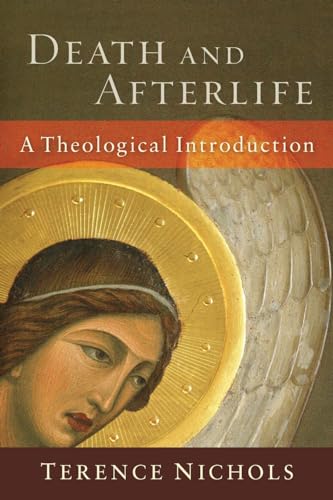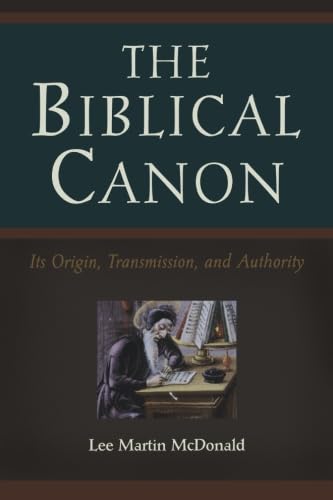Eccentric Existence: A Theological Anthropology
Written by David H. Kelsey Reviewed By David VanDrunenEccentric Existence is a book many years—even decades—in the making. It provides theologians with the fruit of David Kelsey’s long reflections on theological anthropology. The book derives its memorable title from Kelsey’s basic conviction that human beings are centered outside of themselves, and specifically in the distinctive ways in which God relates to them. This is a long, rich, and thorough work to which a relatively brief review cannot possibly do justice. I must be content to highlight some of the chief features and central claims of Kelsey’s project and to offer only a few evaluative reflections.
But first a word about its length. Eccentric Existence is not a book for the reader in a hurry. Kelsey develops his proposal with a sense of leisure, and the book progresses by repeatedly circling around its subjects and often retracing ground before building a new point. This approach beneficially draws patient readers into Kelsey’s orbit and reinforces important claims that he has made and defended earlier. But it does require patience. One unusual feature of Eccentric Existence is that many chapters are divided into A and B sections. The B sections consist of more detailed and technical arguments in support of conclusions Kelsey draws in the A sections. He intends that people can read only the A sections should they not wish to wrestle with the more technical material. Something will be lost this way, but given the length and challenge of the A sections in their own right, many readers may wish to pursue this route.
The book is organized into three parts, preceded by several substantive introductory chapters and followed by three “Codas” that integrate the various claims made throughout the work. The three parts correspond to three claims about human beings that Kelsey believes are non-negotiable for the Christian faith. They concern how God relates to human beings: to create them, to draw them to eschatological consummation, and to reconcile them when alienated from God. These, he says, are “three inseparable, but irreducibly different ways” in which God relates to us. In each part he reflects upon what is implied about human beings by the claim that God relates to them in these three ways. According to Kelsey, God’s relating to create does not presuppose that God relates to draw to eschatological consummation or to reconcile, while God’s relating to draw to eschatological consummation presupposes God’s relating to create but not his relating to reconcile, and God’s relating to reconcile presupposes both of the other ways of relating. The basic human responses appropriate to God’s three ways of relating are, respectively, faith, hope, and love.
Kelsey also gives structure to Eccentric Existence by continually exploring three perennial questions of anthropology: what is a human being, who am I/who are we, and how ought we “to be existentially ‘set’ into, and oriented toward, our ultimate and proximate contexts?”
One especially noteworthy feature of Kelsey’s development of a Christian anthropology is that he does not deal with the idea of the image of God until his three Codas, nearly 900 pages into the book. This is a calculated move, not an oversight. As he warns readers early in the work, and defends at considerable length in one of the codas, he does not see the classic text, Gen 1:26, as providing much help for Christian anthropology. He does, however, see the NT’s identification of Jesus as the image of God as highly significant for tying together the three parts of Eccentric Existence into a coherent “triple helix.” Jesus, as described in the canonical Gospels, is the paradigmatic human being who shows how God relates to human beings in the three ways and how human beings are to respond to such a God in their ultimate and proximate contexts. According to Kelsey, it is not so much that we image God but that we image the image of God.
Evaluating a book requires attention to its stated purposes. Kelsey has aimed to offer proposals for how Christians might view important theological questions rather than to offer dogmatic pronouncements about what Christians must assert about them. Judged by this intention, Kelsey has roundly succeeded, giving the theological world a wealth of material upon which to reflect. His work lacks dependence upon or commitment to a particular theological tradition, and this will prohibit it from becoming a standard text for training ministers and theologians in confessionally serious churches. This freedom from confessional constraints, however, probably has enhanced Kelsey’s ability to think outside of traditional boxes and to make this a very stimulating piece of academic theology.
Most stimulating, in my judgment, is his building an anthropology upon a threefold relation of God toward the human race. Over against temptations—seemingly perennial in Western theology—of centering anthropology in a static conception of the image of God, Kelsey opens lines of thought for conceiving anthropology more dynamically, according to the various plots that Scripture unfolds. I must wonder, however, at a fundamental level, whether Kelsey has identified the proper three categories. His first category does not distinguish the who, what, and how of God relating to human beings in an originally sinless creation from his relating to them after the fall into sin. Scripture makes this crucial distinction and does so with reference to the image of God at climactic points (compare Gen 1:26 and 9:6 in their contexts). This suggests the need to identify two very different ways of God’s relating to human beings where Kelsey has identified only one. With respect to Kelsey’s second category, again I appreciate his extensive attention to God’s drawing human beings to eschatological consummation, a central biblical theme yet seldom made central in Christian anthropology. What is ultimately unpersuasive about Kelsey’s development of this category, however, is his decision to treat it as a theme distinct (albeit inseparable) from God’s work of creation and reconciliation. Scripture presents God’s eschatological drawing of humanity as a constitutive aspect of both his creative work (evidenced in Gen 1 itself as well as in commentaries on it such as Heb 2:5–9) and his reconciling work. God creates and reconciles precisely to draw human beings into eschatological life. This purpose, however, does not characterize his relation with fallen human beings. Thus I suggest that a better threefold categorization would be God relating (a) to create so as to draw human beings into eschatological consummation, (b) to preserve human beings after they have fallen, until the final judgment, and (c) to reconcile human beings so as bring human beings into eschatological consummation.
My suggested alternative presumes an important conviction that Kelsey does not embrace: the historicity of the fall through the sin of the first man Adam. Kelsey asks early in the book whether such a conviction is logically necessary given Christian beliefs about salvation. I believe that it is—though I would add that this “logical” necessity concerns the logic of the biblical narrative itself rather than an abstract logic. Kelsey does well to conclude his anthropology by pointing readers to the NT Jesus, but in the NT he is only the image of God insofar as he is the second Adam.
Finally, and related to this, Kelsey’s use of Scripture is serious and deliberate, and on many occasions extensive, careful, and insightful. But at points where Scripture allegedly conflicts with modern science or historical criticism, the claims of Scripture are too often on the losing end. Readers committed to biblical infallibility must be attentive to this. Nevertheless, because of its frequent technical brilliance and theological insight, Eccentric Existence must now play a part in any serious theological-anthropological discussion.
David VanDrunen
David VanDrunen is Robert B. Strimple Professor of Systematic Theology and Christian Ethics at Westminster Seminary California in Escondido.
Other Articles in this Issue
Most of our readers are theological students and pastors...
The Dazzling Darkness of God’s Triune Love: Introducing Evangelicals to the Theology of Hans Urs von Balthasar
by Stephen M. GarrettJürgen Moltmann observes that Christian theology and the Church face “a double crisis: the crisis of relevance and the crisis of identity...
Plots, Themes, and Responsibilities: The Search for a Center of Biblical Theology Reexamined
by Daniel J. BrendselIn the prolegomena to his “approach to biblical theology,” Charles H...
Since the mid-twentieth century biblical scholars have increasingly accepted that the texts of the Bible must be interpreted in terms of their literary genres...
The present age tends to regard polemics, theological controversies, and all-round doctrinal fisticuffs as, at best, a necessary evil, at worst, one of the most revolting aspects of Christianity...







